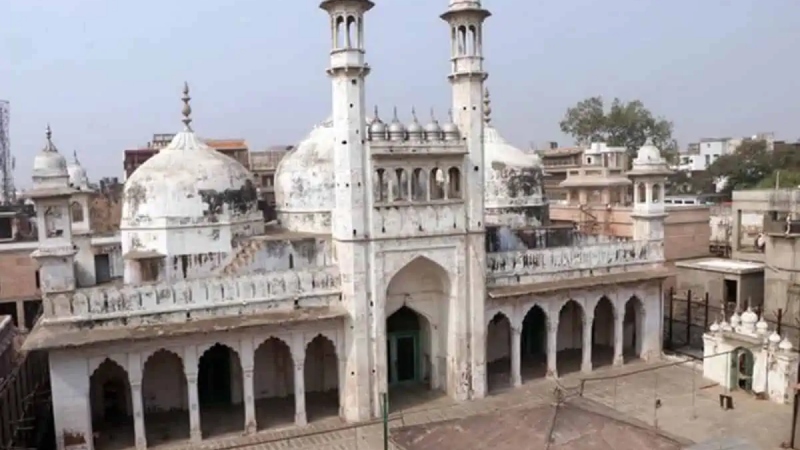
ASI survey report has been provided to both the litigants
Mosque was built in the 20th regnal year of Aurangzeb: ASI
ASI is the handmaiden of Hindutva: Owaisi
With the Ram Mandir Pran Pratishtha having recently concluded, yet another historical monument has become the subject of controversy. The survey report of the Archeological Survey of India (ASI) has been provided to both the litigants of the case pertaining to the contested Gyanvapsi mosque complex. “Arabic-Persian inscription found inside a room mentions that the mosque was built in the 20th regnal year of Aurangzeb (1676-77 CE). The pre-existing structure appears to have been destroyed in the 17th century, during the reign of Aurangzeb, and part of it was modified and reused in the existing structure. A total of 34 inscriptions were recorded during the present survey and 32 stampages were taken. These are, in fact, inscriptions on the stones of the pre-existing Hindu temples, which have been re-used during the construction/ repair of the existing structure. They include inscriptions in Devanagari, Grantha, Telugu and Kannada scripts,” the report stated.
All India Majlis-e-Ittehadul Muslimeen (AIMIM) president Asaduddin Owaisi reacted to this development. “This wouldn’t stand academic scrutiny before any set of professional archaeologists or historians. The report is based on conjecture and makes a mockery of scientific study. As a great scholar once said ‘ASI is the handmaiden of Hindutva,” he stated on the microblogging platform X (formerly known as Twitter).
This wouldn’t stand academic scrutiny before any set of professional archaeologists or historians. The report is based on conjecture and makes a mockery of scientific study. As a great scholar once said “ASI is the handmaiden of Hindutva“ https://t.co/vE76X1uccM
— Asaduddin Owaisi (@asadowaisi) January 25, 2024

ASI survey report has been provided to both the litigants
Mosque was built in the 20th regnal year of Aurangzeb: ASI
ASI is the handmaiden of Hindutva: Owaisi
With the Ram Mandir Pran Pratishtha having recently concluded, yet another historical monument has become the subject of controversy. The survey report of the Archeological Survey of India (ASI) has been provided to both the litigants of the case pertaining to the contested Gyanvapsi mosque complex. “Arabic-Persian inscription found inside a room mentions that the mosque was built in the 20th regnal year of Aurangzeb (1676-77 CE). The pre-existing structure appears to have been destroyed in the 17th century, during the reign of Aurangzeb, and part of it was modified and reused in the existing structure. A total of 34 inscriptions were recorded during the present survey and 32 stampages were taken. These are, in fact, inscriptions on the stones of the pre-existing Hindu temples, which have been re-used during the construction/ repair of the existing structure. They include inscriptions in Devanagari, Grantha, Telugu and Kannada scripts,” the report stated.
All India Majlis-e-Ittehadul Muslimeen (AIMIM) president Asaduddin Owaisi reacted to this development. “This wouldn’t stand academic scrutiny before any set of professional archaeologists or historians. The report is based on conjecture and makes a mockery of scientific study. As a great scholar once said ‘ASI is the handmaiden of Hindutva,” he stated on the microblogging platform X (formerly known as Twitter).
This wouldn’t stand academic scrutiny before any set of professional archaeologists or historians. The report is based on conjecture and makes a mockery of scientific study. As a great scholar once said “ASI is the handmaiden of Hindutva“ https://t.co/vE76X1uccM
— Asaduddin Owaisi (@asadowaisi) January 25, 2024
